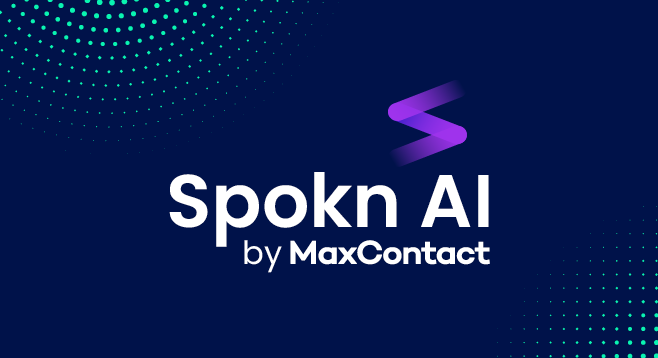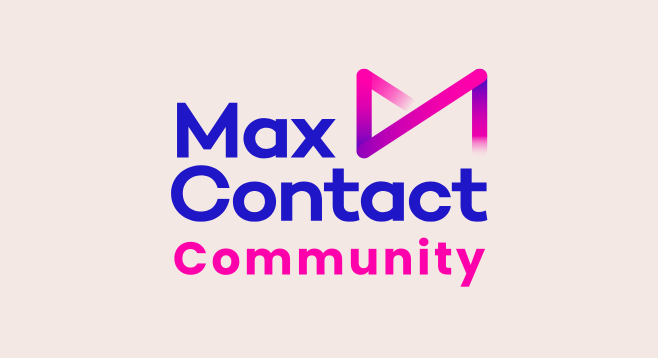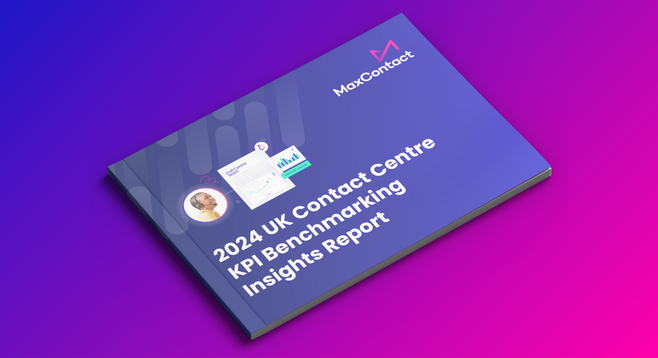Measuring call centre efficiency isn’t easy. With so many KPIs to analyse, consistently tracking which metrics matter most is difficult.
We’ve compiled an easy-to-follow cheatsheet of metrics you should care about across four key areas, to help you stay focused.
- Customer experience
- Agent productivity
- Call initiation
- Call centre operations
Tracking and acting on these metrics will help you maximise customer satisfaction, maintain efficient operations and consistently drive high performance.
1. Customer experience
Metrics that measure customer satisfaction, loyalty and ease of service.
Customer Satisfaction Score (CSAT)
- What is it? CSAT Measures customer satisfaction with a product, service, or interaction.
- Why does it matter? It indicates overall customer happiness and loyalty.
- Top Tip: Use post-interaction surveys to gather feedback and address negative responses quickly.
How to calculate Customer Satisfaction Score (CSAT)
CSAT = (Positive Responses/Total Responses) x 100
Net Promoter Score (NPS)
- What is it? NPS measures customer loyalty by asking customers, ‘How likely are you to recommend us?’
- Why does it matter? NPS strongly correlates with long-term customer retention.
- Top Tip: Use follow-up questions to understand the pain points of detractors and convert them into promoters.
How to calculate Net Promoter Score (NPS)
NPS = %Promoters − %Detractors
First Contact Resolution (FCR)
- What is it? First Contact Resolution (FRC) is the percentage of issues resolved during the first interaction with a call agent.
- Why does it matter? Higher FCR usually positively impacts customer satisfaction and reduces repeat calls, resulting in less frustration.
How to calculate First Contact Resolution (FCR)
FCR = (Issues Resolved on First Contact/Total Issues)×100
First Response Time (FRT)
- What is it? First Response Time (FRT) is the average time it takes to respond to a customer’s initial contact.
- Why does it matter? The faster your responses, the higher your customer satisfaction scores will be.
How to calculate First Response Time (FRT)
FRT = Total Number of Tickets Responded To/Total Time to First Response for All Tickets
Customer Effort Score (CES)
- What is it? Customer Effort Score (CES) measures how much effort a customer spends to resolve their issue.
- Why does it matter? The less effort a customer has to put in, the higher the correlation in satisfaction and loyalty.
How to calculate Customer Effort Score (CES)
CES=Total Number of Responses/ Sum of All Customer Effort Scores
Repeat Call Rate
- What is it? Repeat Call Rate is the percentage of customers who call back about unresolved issues.
- Why does it matter? A high Repeat Call Rate indicates gaps in problem resolution that could be addressed with agent training.
How to calculate Repeat Call Rate (RCR)
RCR=Total Calls Handled/Number of Repeat Calls×100
Script Adherence Rate
- What is it? Script Adherence Rate is the percentage of calls where call agents have followed the approved script.
- Why does it matter? It makes sure communication is consistent and regulatory compliant.
How to calculate Script Adherence Rate
Script Adherence Rate (%)= Total Number of Calls Evaluated/Number of Calls Where the Script Was Followed×100
Customer Lifetime Value (CLTV)
- What is it? CLTV is the overall revenue a customer is expected to generate during their relationship with the business.
- Why does it matter? It helps to prioritise high-value customer interactions and enables more experienced agents to handle those calls.
How to calculate Customer Lifetime Value (CLTV)
CLTV=Average Purchase Value×Average Purchase Frequency×Customer Lifespan
Revenue Per Call (RPC)
- What is it? RPC measures revenue generated per call.
- Why does it matter? RPC assesses the profitability of call centre operations.
How to calculate Revenue Per Call (RPC)
RPC=Total Number of Calls Handled/Total Revenue Generated
2. Agent productivity metrics
Metrics that provide insight into the performance of call centre teams and individual agents, highlighting strengths and areas for improvement through training.
Average Handle Time (AHT)
- What is it? AHT measures the total time spent on a call and includes talk, hold and wrap-up time.
- Why does it matter? AHT can help to identify if agents are effectively balancing efficiency and customer satisfaction.
How to calculate Average Handle Time (AHT)
AHT = Talk Time + Hold Time + After-Call Work/Total Calls Handled
Average Talk Time (ATT)
- What is it? ATT tracks the time agents spend actively speaking with customers.
- Why does it matter? Indicates efficiency and the complexity of customer issues and provides more context to Average Handle Time.
How to calculate Average Talk Time (ATT)
ATT=Total Number of Calls Handled/Total Talk Time
Quality Assurance (QA) Score
- What is it? Quality Assurance Score measures how well a call agent meets the defined quality of service, comparing an agent’s interaction against predefined scorecards.
- Why does it matter? Monitoring QA ensures consistency and alignment with industry standards. Analysing quality scores across call agents can identify training needs.
How to calculate Quality Assurance Score (QA)
QA Score (%)=Total Points Available/Total Points Achieved×100
Agent Utilisation Rate
- What is it? Agent Utilisation Rate calculates the percentage of an agent’s working time spent handling calls.
- Why does it matter? It provides an overview of workload across call teams to prevent burnout.
How to calculate Agent Utilisation Rate
Agent Utilisation Rate (%)=Total Working Time/Time Spent on Productive Activities×100
Schedule Adherence Rate
- What is it? Schedule Adherence Rate measures how closely agents stick to their schedules.
- Why does it matter? It helps to make sure there is sufficient call agent coverage during peak times.
How to calculate Schedule Adherence Rate
Schedule Adherence Rate (%)=Total Scheduled Time/Time Spent Adhering to Schedule×100
Average Hold Time (AHT)
- What is it? Average Hold Time measures the mean amount of time customers are placed on hold.
- Why does it matter? Long average hold times highlight potential issues that need to be resolved as it negatively impacts customer satisfaction.
How to calculate Average Hold Time (AHT)
Average Hold Time (AHT)=Total Number of Calls/Total Hold Time Across All Calls
First-Call Close Rate
- What is it? First-Call Close Rate shows the percentage of calls resolved on the first attempt.
- Why does it matter? A high first-call close rate enhances customer satisfaction while reducing follow-up calls and agent workload.
How to calculate First-Call Close Rate (FCCR)
FCCR (%)=Total Number of Calls Handled/Number of Calls Closed on First Attempt×100
3. Call initiation metrics
Metrics that show how quickly and efficiently customer and agent calls are connected.
Average Speed of Answer (ASA)
- What is it? ASA is the average time it takes for call agents to answer inbound calls.
- Why does it matter? Longer wait times lead to frustrated customers and higher call abandonment.
How to calculate Average Speed of Answer (ASA)
ASA = Total Time Waiting in Queue/Total Calls Answered
Call Transfer Rate
- What is it? Call transfer rate measures the percentage of calls transferred to another agent or department.
- Why does it matter? High call transfer rates suggest poor call routing or gaps in agent training.
How to calculate Call Transfer Rate (CTR)
CTR (%)=Total Calls Handled/Number of Calls Transferred×100
Right Party Contact (RPC)
- What is it? RPC measures the percentage of outbound calls that successfully connect with the right person.
- Why does it matter? Low RPCs can lead to higher operational costs and reduced customer satisfaction. Low RPCs have the potential to be a compliance issue for sales and debt collection call centres.
How to calculate Right Party Contact (RPC)
RPC (%)=Total Number of Contact Attempts/Number of Right Party Contacts×100
Call Abandonment Rate
- What is it? Call abandonment rate is the percentage of customer calls that hang up before speaking to an agent.
- Why does it matter? High call abandonment signals customer dissatisfaction with wait times.
How to calculate Call Abandonment Rate
Abandonment Rate = (Abandoned Calls/Total Incoming Calls) ×100
4. Call centre operations metrics
Metrics that provide insights into the overall efficiency of call centre operations, enabling call centres to optimise processes.
Service Level Agreement (SLA) Compliance
- What is it? SLAs measure the percentage of calls answered within a predefined timeframe and quality standard. This is pre-agreed between the call centre and their clients.
- Why does it matter? Measuring calls in line with SLAs shows adherence to service-level performance goals.
How to calculate Service Level Agreement compliance
SLA Compliance = (Calls Answered Within SLA Time/Total Incoming Calls) ×100
Cost Per Call (CPC)
- What is it? CPC is the average cost incurred per call handled.
- Why does it matter? Evaluating CPC helps call centres optimise budget allocation.
How to calculate Cost Per Call (CPC)
CPC = Total Call Centre Costs/Total Calls Handled
Tracking these metrics will help you monitor call centre performance, enhance customer satisfaction and streamline your operations. With the right tools, like MaxContact’s reporting and analytics features, you can stay on top of these KPIs and drive meaningful results.





